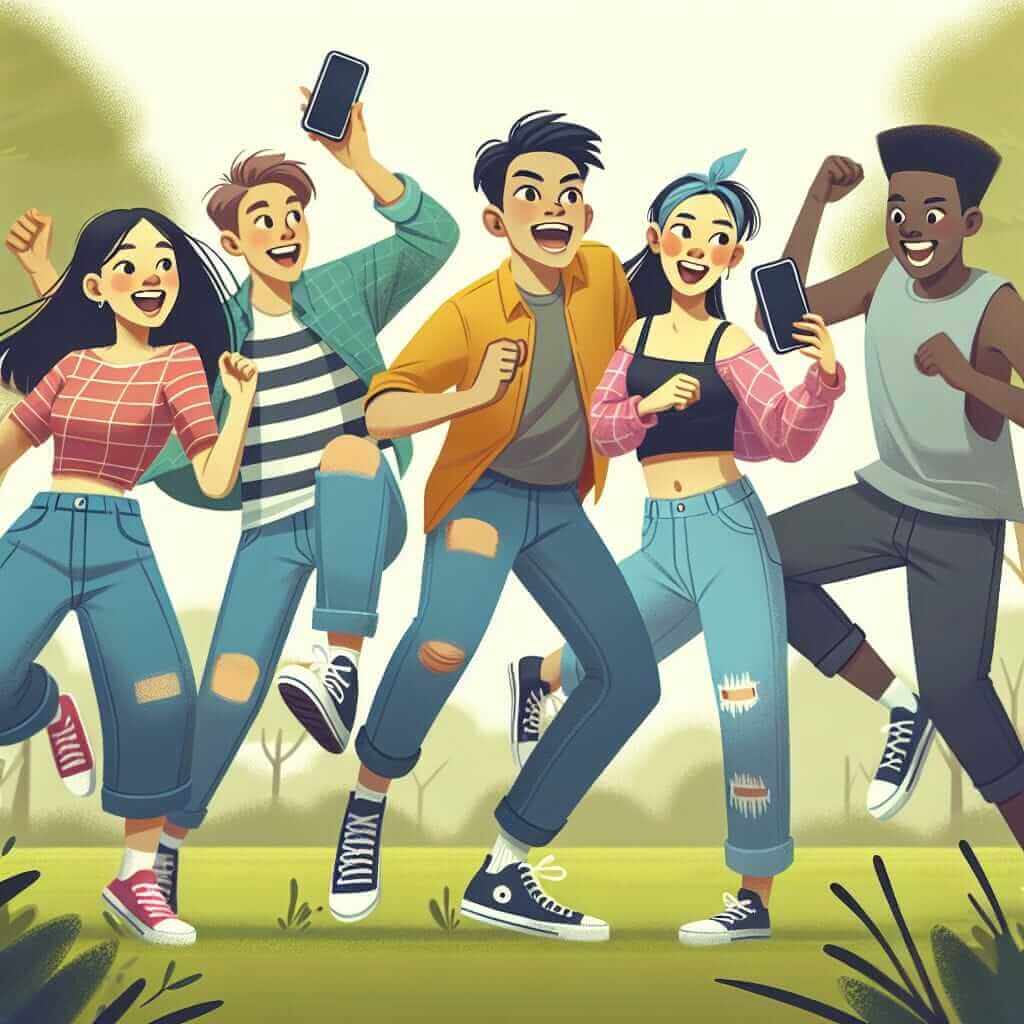In the IELTS Speaking test, achieving high scores require fluency, coherence, lexical resource, grammatical range, and pronunciation. This comprehensive guide will help you address even the most challenging questions, such as “Describe a recent social media trend”. Let’s dive into the details and sharpen your skills.
Nội dung bài viết
Overview
The IELTS Speaking test comprises three parts:
- Part 1: Introduction and Interview – This part includes general questions on familiar topics.
- Part 2: Long Turn – You’ll receive a cue card with a topic and enough time to speak for 1-2 minutes.
- Part 3: Two-way Discussion – The examiner will ask you more abstract questions related to the Part 2 topic, giving you the opportunity to discuss and analyze in depth.
Examiner evaluations focus on fluency, coherence, lexical resource, grammatical range, and pronunciation. Understanding these criteria is essential for high scores.
Part 1: Introduction and Interview
Common Questions
Examiner questions in Part 1 often include general and personal inquiries. Here are some commonly asked introductory questions around the topic of social media:
- What social media platforms do you use most frequently?
- How has social media changed the way you communicate with your friends and family?
- Are there any downsides to using social media?
Sample Answer
Examiner: What social media platforms do you use most frequently?
Candidate: I primarily use Instagram and Twitter. Instagram is excellent for sharing photos and stories with my circle, whereas Twitter keeps me updated with the latest news and trends. While both have their unique features, Instagram’s visual-centric approach and Twitter’s text-heavy interface cater to different aspects of my daily social media interaction.
This structured answer demonstrates fluency, coherence, and the use of connectors.
Part 2: Long Turn
Cue Card
Describe a recent social media trend. You should say:
- What the trend is
- How you became aware of it
- Who tends to follow this trend
- And explain why you think this trend is popular
Sample Answer
Candidate: One of the most prominent social media trends recently is the surge of TikTok dance challenges. I first came across this phenomenon on Instagram, where my friends were sharing TikTok videos. Youth, particularly teenagers and young adults, are the primary followers of this trend. The simplicity of participating, the fun involved in creating dance routines, and the viral nature of these challenges contribute significantly to their popularity. The most striking example is the “Renegade” challenge, which went viral and saw millions of participants worldwide. Engaging and entertaining content seems to be the key to this trend’s success. Not only does it encourage creativity, but it also fosters a sense of community among participants.
Follow-up Questions
- Why do you think people enjoy participating in these dance challenges?
- People find them enjoyable because they are interactive and community-building activities. They promote physical activity, foster creativity, and often celebrate individual expression.
- Do you think these trends have long-lasting impacts?
- While many trends are ephemeral, some leave a more permanent mark by influencing fashion, music, or even language. Since they tap into the current cultural zeitgeist, their impacts are often observed in broader societal changes.
Part 3: Two-way Discussion
Discussion Questions
Moving on to a broader discussion, the examiner may ask more analytical and abstract questions related to social media trends.
Examiner: How do social media trends influence our daily lives?
Candidate: Social media trends significantly shape our daily routines and concepts of what is “normal.” They affect everything from our purchasing habits to our communication styles. For instance, the rise of influencer marketing has altered how people decide on products. Trends like hashtag activism (e.g., #BlackLivesMatter) demonstrate social media’s ability to drive social and political movements. Moreover, trends can mold youth culture, affecting language use, fashion choices, and behavioral norms.
Evaluative Question
Examiner: In what ways can these trends be beneficial or harmful to society?
Candidate: On one hand, trends can be beneficial by promoting awareness, engagement, and connectivity. They can also inspire creativity and innovation. On the other hand, they might propagate misinformation, encourage superficiality, or foster dependency on virtual validation. Balancing these benefits and drawbacks is crucial for a healthy social media environment.
Essential Vocabulary and Phrases
Here are some important words and phrases to boost your speaking score:
- Trend /trend/ – a general direction in which something is developing or changing
- Phenomenon /fəˈnɑːmɪnən/ – an observable fact or event
- Surge /sɜːrdʒ/ – a sudden powerful forward or upward movement
- Viral /ˈvaɪrəl/ – quickly and widely spread or popularised, especially via the internet
- Community-building /kəˈmjuːnɪti ˈbɪldɪŋ/ – activities aimed at creating or enhancing community connections
- Engaging content /ɪnˈɡeɪdʒɪŋ ˈkɒntɛnt/ – content that attracts and holds interest
- Culture zeitgeist /ˈkʌltʃər ˈzaɪtɡaɪst/ – the defining spirit or mood of a particular period of history
For example:
- “The trend of short video content is quite phenomenal.”
- “TikTok challenges create a unique sense of community-building.”
Advice for High Scores
- Practice Regularly: Consistent practice can help build fluency and confidence.
- Use a Variety of Vocabulary: Incorporate a range of words and phrases to enrich your answers.
- Stay Updated on Trends: Being aware of current events and trends can provide you with more examples and ideas.
- Seek Feedback: Engage with teachers or peers for constructive criticism.
By understanding the structure and expectations of the IELTS Speaking test and practicing focused responses, you can significantly enhance your performance.

Remember: Effective communication, pertinent examples, and a sound grasp of relevant vocabulary are key to excelling. Good luck!